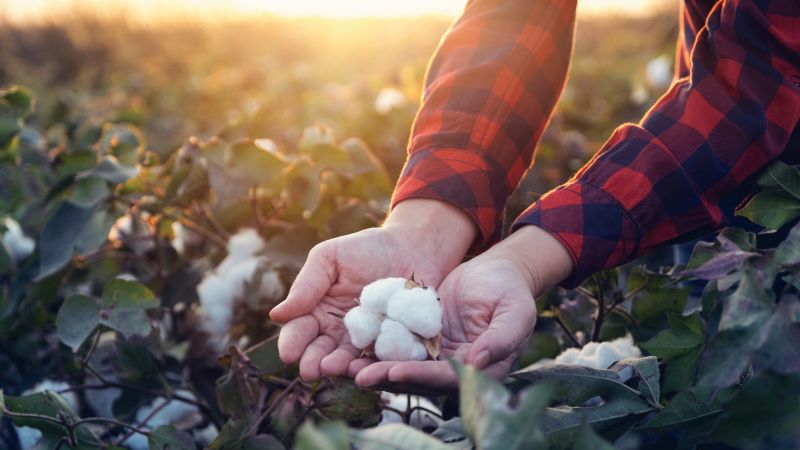ACSA’s International Cotton Institute Student Essay: Organic Cotton
As a young member of this industry who has witnessed so many big changes, I started to believe that speed had become the new goal. Having a low break-even point is no longer good enough in today’s textile world. What is proving to be more important today is the ability to adapt and be flexible to new opportunities.
From my perspective, one of the key changes we may see could be organic cotton. It could soon have a small, but very important, impact on the cotton industry in the near future.
The amount of land used to grow conventional cotton hasn’t changed since the 1930s, but yields have increased about 300 percent through hybridization, intensive land management, and the use of chemical pesticides and fertilizers. However, organic cotton is grown using methods and materials that ultimately have a lower impact on the environment. Organic production systems refill and maintain soil fertility, reduce the use of toxic and persistent pesticides and fertilizers, and build biologically diverse agriculture.
Consumer concern about environmental issues has been increasing in recent years. The table below illustrates the main differences between these two different sorts of cotton production very clearly.
Table – Comparison between Conventional Cotton and Organic Cotton (Source: http://www.liveco.ca/organic-cotton)
Organic cotton now represents only 0.76 percent of global cotton production but it is still in a growth stage, being cultivated in 24 countries worldwide with the top three producers being led by India, China and Turkey. One of its primary keys to success is to build consumer preferences for this niche industry. Organic cotton revenues are on the rise because:
- New consumers are trying the organic products more, and
- A growing proportion of satisfied customers are making repeat purchases.
Consumer demand will be the key issue for the future development of global organic cotton production and trade. Many questions exist in today’s market, such as how to communicate the benefits of organic cotton to consumers and what direction consumer demand for organic textiles will go in the near future.
Geographical Market
The United States is the world’s biggest market for organic cotton. Current consumption, in the form of apparel end-products in the United States, is roughly at 9,500 tons (41 percent of the world total) versus 7,000 tons in Europe (30 percent of total). At 20 percent of the market. Japan is expected to consume the equivalent of about 350 tons of organic cotton annually. These numbers take into account the fact that many United States-based textile and clothing companies — including Levi’s, Nike and Wal-Mart, which are the three biggest users of organic fiber — sell a significant part of their production internationally.
I recently discussed the future of organic cotton with Texas Organic Cotton Marketing Cooperative (TOCMC) Manager Kelly Pepper. TOCMC’s members produce the majority of the organic cotton grown in the United States, with about 30 producer members growing organic and transitional cotton there. During the course of our discussion, I learned that organic cotton demand will continue to grow in the future, increasing the number of spinning and textile mills involved and enlarging the range of intermediate and end-products available to consumers.
Organic Cotton Growth in the U.S.A
American organic cotton consumption is approximately 9,500 tons of fiber, accounting for 40 percent of global production and trade. Until recently, the sale of organic cotton items in the United States relied on electronic commerce, natural and health-food stores, and small, specialized eco-textile shops and boutiques. Today, that picture is starting to change, with supermarkets and small general stores offering organic cotton items, including department stores like Levi’s, Nike, Timberland, and Wal-Mart. Wal-Mart, which began selling organic cotton items through its subsidiary Sam’s Club in 2005, is the leader in organic cotton consumption in the world today. In 2006, the company launched a line of baby wear in Wal-Mart supermarkets under the label “George Baby Organic.” This model for growth was used by important brand, Nike, which has increased its organic cotton consumption every year since 2000, becoming the global leader in organic cotton fiber.
Future of the industry
The overall picture for organic cotton looks bright, although the immediate future appears uncertain as consumer demand and awareness shape the future of organic cotton industry. The organic cotton industry should understand that for a long time, they will utltimately be in the education business. Consumers will need to be constantly taught about the many advantages of buying organic textiles and trained to use organic products more effectively. In addition, government support will be extremely important to the future of this industry. Governments have to work closely with farmers, manufacturers and retailers on regular basis to measure the economic, social and environmental effects of transition to organic farming.









